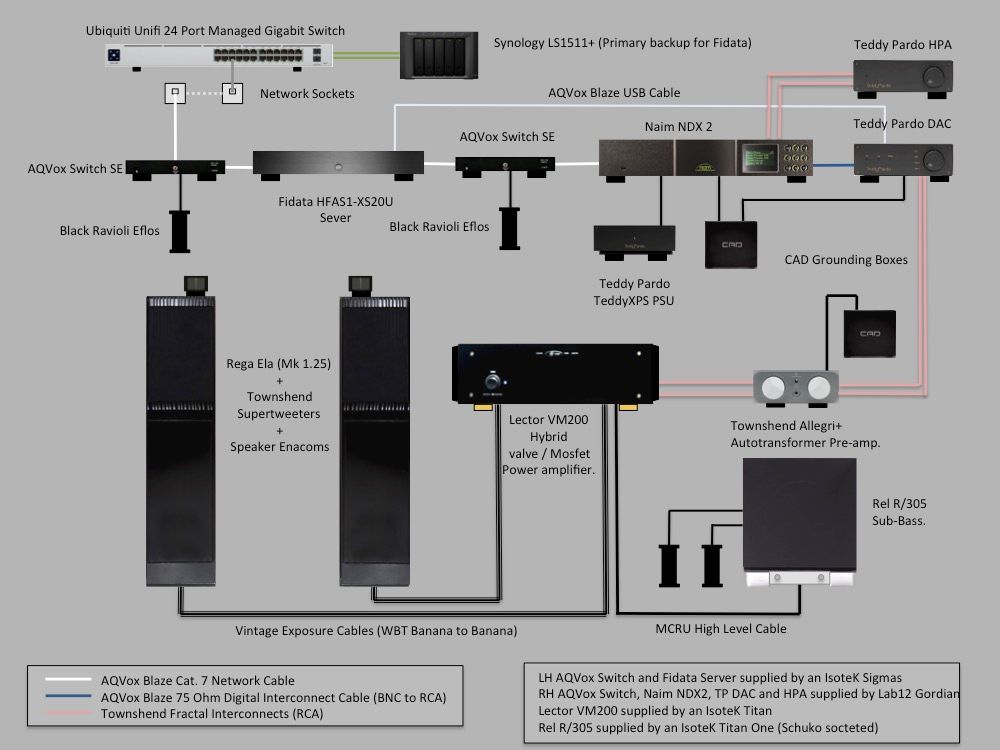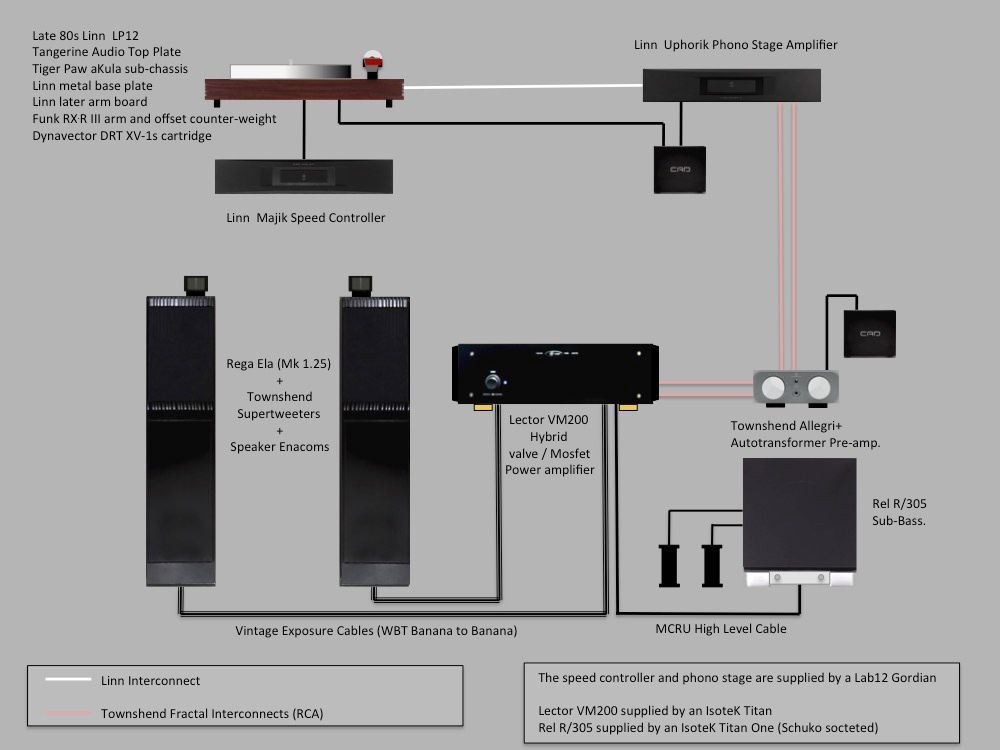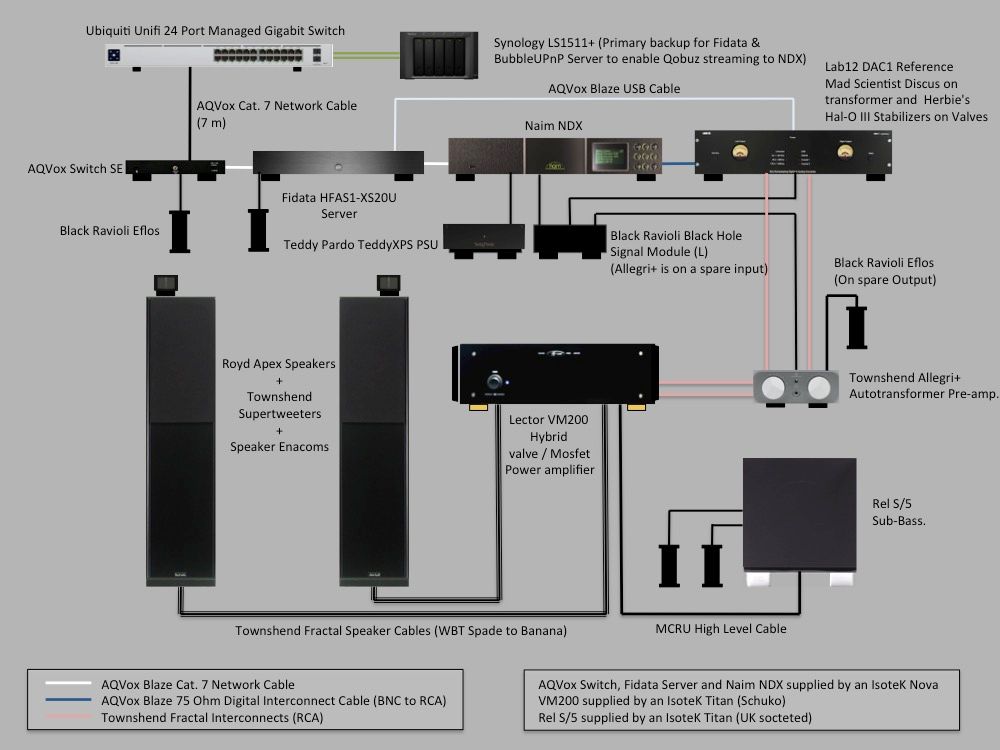|
|
Post by petea on Mar 14, 2022 9:27:03 GMT
HiFi Tuning Supreme3 fuses (gold plated OFC Cardas copper) ordered from IK Audio GmbH, trading as DIY-Audio24 on eBay.de. They should be here in a day or so. Let's see how these do. I tracked a 13A one for the UK plug feeding the Rel Sub from the second Titan from Analogue Seduction, but that will be delivered to the UK and I'll collect it when I'm back next month to try in place of the SR Blue.
|
|
|
|
Post by petea on Mar 14, 2022 9:30:17 GMT
|
|
|
|
Post by MartinT on Mar 14, 2022 9:36:13 GMT
I like HiFi Tuning Supreme fuses for PSU DC applications. They seem the best at that.
|
|
|
|
Post by petea on Mar 14, 2022 9:43:47 GMT
I put some into an amplifier some years ago, but I can't recall which one now. It may have been my old Meridian monoblocks which are now lurking in a storeroom at work.
|
|
|
|
Post by MartinT on Mar 14, 2022 10:17:56 GMT
Those measurements only seem to cover static resistance of the fuse. I doubt it has the level of influence that non-linearity in the fuse resistance has, but sadly there are no measurements of the latter. |
|
|
|
Post by petea on Mar 14, 2022 10:44:50 GMT
True, but is something at least.
|
|
|
|
Post by petea on Mar 14, 2022 10:48:49 GMT
I guess the vector analyser will have shown differences across whatever range they used, but they only give a 'conclusion' and not the data.
|
|
|
|
Post by petea on Mar 14, 2022 14:10:41 GMT
|
|
|
|
Post by petea on Mar 14, 2022 14:16:24 GMT
UK System: Streaming and File PlaybackAs in Germany all equipment and speaker are supported on Townshend Platforms and Pods and the speakers / sub are on Townshend Podiums. The TP DAC, PSU and HPA are on Black Ravioli pads. The system is split across 2 racks one either side of a doorway (hence the second AQVox switch to 'compensate' for a long cable run adjacent to other cables). The Fidata server, and amplification is one one rack (along with CD playback) and the Streamer, DAC and HPA are on the other. 
|
|
|
|
Post by petea on Mar 14, 2022 15:06:55 GMT
UK System: CD PlayerAs you can see, the amplification and speakers are shared and the CD player and its DAC live on the same rack as the Fidata server and amplifiers. The CD player and DAC are on Townshend Platforms. The PSUs are on BR Pads. .jpg)
|
|
|
|
Post by petea on Mar 14, 2022 16:30:14 GMT
UK System: Vinyl ReplayAgain, the amplification and speakers are shared, but the record deck, its speed controller and phono stage amplifier live on the same rack as the NDX2 streamer etc. The deck is on a Townshend Platform whereas the phono stage is on BR Pads although I have plans to improve the isolation of this in the near future. There are also a couple of modifications to the arm due, including a Funk Houdini isolator for the cartridge. I just need to find the time (and be in the right country) to fit them! Aside from a record cleaner and the small systems here in Germany that completes the system schematics. For now at least! 
|
|
|
|
Post by MikeMusic on Mar 14, 2022 16:34:33 GMT
|
|
|
|
Post by petea on Mar 14, 2022 16:43:11 GMT
Some of the above may soon be thrown into disarray. An alternative power amplifier is due to turn up today here in Germany (same as in the UK) and I will be investigating a delta / sigma DAC; the Lab12 and Lectors are both R2R. In addition I have a Lector Digicode S-192 DAC in the UK to replace the standard Digicode shown in the CD schematic. If this is as good as the current one on the CD player it will likely mean that the Teddy Pardo will come out of the system and so the wiring and component placement will change a bit. I also have a Mutec 10 MHz REF10 SE120 reference clock and have ordered a Mutec MC3+ USB to go with it to enable me to provide the S-192 with a 24.576 MHz external clock signal. I could then also feed a 10 MHz signal to an UpTone Audio EtherREGEN unit (with UltraCap PSU) to relace of the second AQVox switch. Working out the space and logistics and space might be a problem though!
|
|
|
|
Post by petea on Mar 15, 2022 10:34:31 GMT
The Lector VM200 was delivered by UPS this morning. It is an ex-demonstration unit from a Lector dealer in Italy (I think the same company I bought my last one from in fact). I really like Lector devices, but they are almost impossible too get hold of in a reasonable time-frame. They have had my 'spare' CDP and DAC for repairs and upgrade for 5 years now. It is almost done apparently (must call them again as that update was last summer!) - mind they are based in the small town that was the epicentre of the COVID19 outbreak in Italy.
Anyway, the VM200 is in and playing and is likely to be the first choice over the Suono. The difference in the bass is far from subtle and I might have to even turn the gain on the sub down!
|
|
|
|
Post by petea on Mar 15, 2022 12:40:29 GMT
This reflects the variant when using the VM200 in place of the Suono. This created a slight logistical problem, but it was resolved by placing the Suono on its Townshend Platform on top of the VM200, which means I can even switch between them with relative ease. I had a spare large platform, but this proved too small front-to-back for the VM200 - I'd forgotten how deep they are and in the UK the unit there is supported directly by pods. I was going to do the same here, but using 5 or 6 Type C pods to accommodate the combined weight, but then I remembered that I had a second pair of speaker bars as only one pair was needed for the Rel sub. This worked well and both amplifiers 'float' nicely and it looks nicer than my first plan would have I think! I should be able to slide the bars in a bit more now that it is adjusted / balanced as I can see a slight bend in them. If that doesn't work, I'll add a plate of some sort - the Townshend Platform without Pods but the other way around would work by the look of it.   |
|
|
|
Post by MartinT on Mar 15, 2022 12:44:46 GMT
Which way round is the Lector hybrid - valve small signal with power MOSFETs or the reverse?
|
|
|
|
Post by petea on Mar 15, 2022 13:34:07 GMT
Tube to MOSFET:
"Lector proudly introduces the all new VM200 hybrid power amplifier featuring innovative direct coupled circuit from tube to mosfet. No any coupled capacitors on signal path!
This new concept offers a transparent and rich dynamics sounds performances.
A lot of new innovative technologies and solution on this power amplifier rated as 100 w per channel:
- only two stages from input to output (first stage by triode and second stage by pentode)
- dc coupled design from tube to mosfet without any capacitors!
- triode / pentode tube driving the mosfet in pure class A
- low feedback design set to only at 10% db
The power supply employ four stages and two toroidal transformers, the power supply design : shunt regulator for tube , hi-energy reservoir capacitors for output mosfet, the tube-filaments are supply on d.c. for lowest noise floor ! The electronics and mechanical parts are selected as all premium grade components : polypropylene capacitors, toroidal hi-energy power transformer (2) , metal foil and tantalium resistors, 1.5 mm thickness steel chassis box, 10 mm thickness plexiglass front panel.
For better quality sound reproduction the output device don't use any type of protection as limiting the current so it’s possible to drive low impedance loudspeakers with very good stability and energy power reservoir."
I think when you heard the system in the UK it was using modified Meridian mono-blocks as I had not managed to find a VM200 by then.
|
|
|
|
Post by petea on Mar 15, 2022 13:36:22 GMT
The bass is phenomenally nuanced compared with the Suono, and that is none too shabby!
|
|
|
|
Post by petea on Mar 15, 2022 13:37:30 GMT
I have some tube dampers ready to install at some point. I just need to build my strength up to lift the Suono off again!  |
|
|
|
Post by petea on Mar 15, 2022 13:38:36 GMT
Oh, and sliding the bars in a bit did the trick, once I'd figured how to jack the stack up! A total of 45 kg, and well within the range for the bars as they were spec'd for the Rel S/5 to be about mid weight and that weighs 32 kg.
|
|